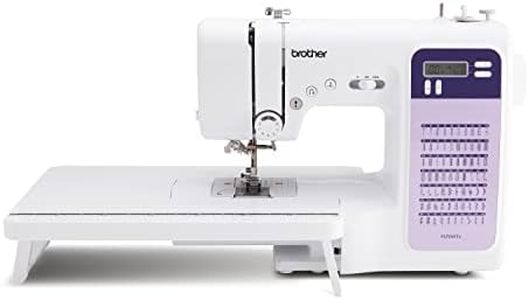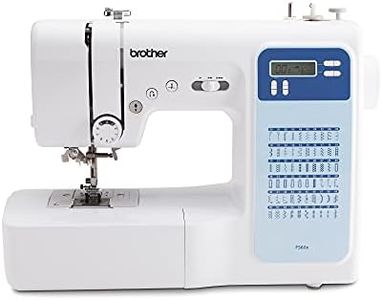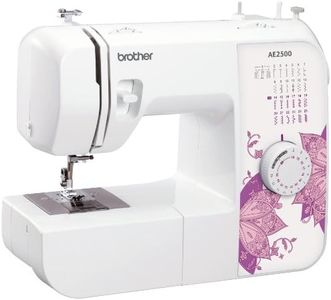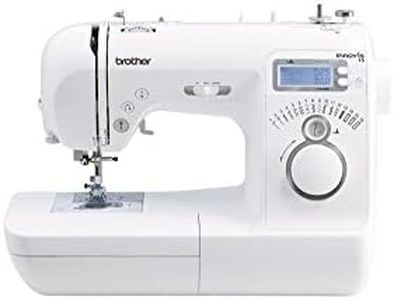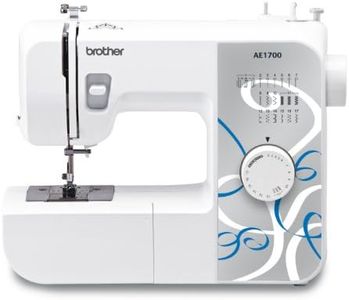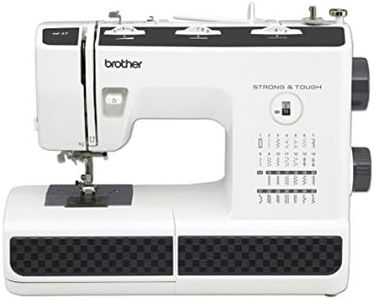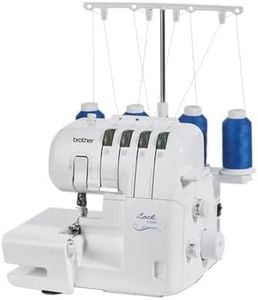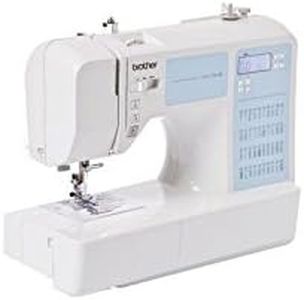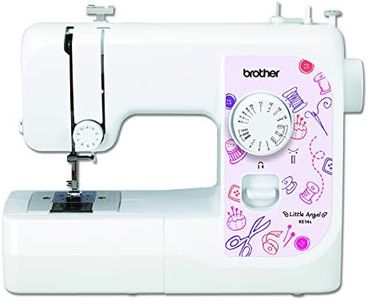We Use CookiesWe use cookies to enhance the security, performance,
functionality and for analytical and promotional activities. By continuing to browse this site you
are agreeing to our privacy policy
10 Best Brother Sewing Machines
From leading brands and best sellers available on the web.By clicking on a link to a third party's website, log data is shared with that third party.
Buying Guide for the Best Brother Sewing Machines
Choosing the right sewing machine can make your crafting, mending, or designing projects a lot more enjoyable and productive. It's important to consider your skill level, the types of sewing you plan to do (basic repairs, clothing construction, quilting, embroidery, etc.), and the features that will make your experience smoother and more creative. Avoid being swayed only by the most complex machines; the best fit is one that matches your current needs and also gives you a little room to grow.Stitch Types and Number of Built-in StitchesThis spec tells you how many different stitch patterns the machine can perform, such as straight, zigzag, decorative, or stretch stitches. More stitch options let you do a wider variety of sewing projects, but a beginner might not use more than the basics. Machines with 10-20 stitches are great for simple tasks and basic garment making, while those offering 30 or more usually include many decorative and specialty stitches for advanced projects like quilting or embellishments. Think about what types of projects you want to tackle—if you just need to hem jeans and make basic repairs, fewer stitches suffice; for creative sewing and decorative work, consider a machine with broader stitch selection.
Automatic Needle ThreaderAn automatic needle threader helps you avoid the sometimes tricky process of getting the sewing thread through the tiny eye of the needle. It can save time and reduce eye strain, especially if you sew often or have difficulty with fine motor tasks. Some machines include a simple, lever-operated threader, while others may not. If you value convenience or if threading needles frustrates you, prioritize this feature, especially if you're committed to regular sewing.
Sewing Speed ControlSewing speed refers to how fast the machine can sew, typically measured in stitches per minute. Some machines sew as slow as 500 stitches per minute, while advanced ones can exceed 800 or even 1,000. Adjustable speed control is useful for beginners, letting you slow things down for tricky steps, and for advanced crafters who want to speed up garment production. Look for a machine that allows you to adjust speed easily if you anticipate varying your work between delicate tasks and straight runs.
Buttonhole StylesThis spec shows how many types of buttonholes the machine can make automatically. A one-step buttonhole process makes things smooth and uniform, whereas a four-step process requires more manual effort. For clothing construction, a simple one-step buttonhole is ideal. Machines may offer several buttonhole styles for different looks and fabrics. Consider how often you'll be making buttonholes and whether you need multiple types for your garments.
Built-in Free ArmA free arm is a narrower, removable section of the sewing surface that lets you sew cylindrical or hard-to-reach areas like sleeves, cuffs, and pant hems. If you plan to work on clothing, a built-in free arm is almost essential, while quilters or crafters focusing on flat projects may use this feature less often. Check that the machine has this option if easy sleeve and hem sewing will be a routine task for you.
Feed System and Fabric HandlingThe feed system describes how the machine moves fabric under the needle. A multi-point or advanced feed system handles thicker or layered fabrics better and improves stitch consistency on bulky or slippery materials. Simple, basic feed mechanics suffice for light and regular fabrics, while enhanced systems help serious sewers who tackle denim, quilting layers, or stretchy knits. Consider the types of fabrics you’ll use most—if you often sew tough or multiple-layer materials, prioritize a machine with a strong fabric feed.
Ease of Use FeaturesThis includes things like quick-set bobbins, clear bobbin covers, simple stitch selection, and easy-to-read displays or dials. Even if the machine is capable, tricky controls can spoil the experience, especially for beginners. For a positive, frustration-free start, look for intuitive controls and helpful setup guides built into the machine. These features matter most when you want a smooth learning curve and regular sewing without troubleshooting.
